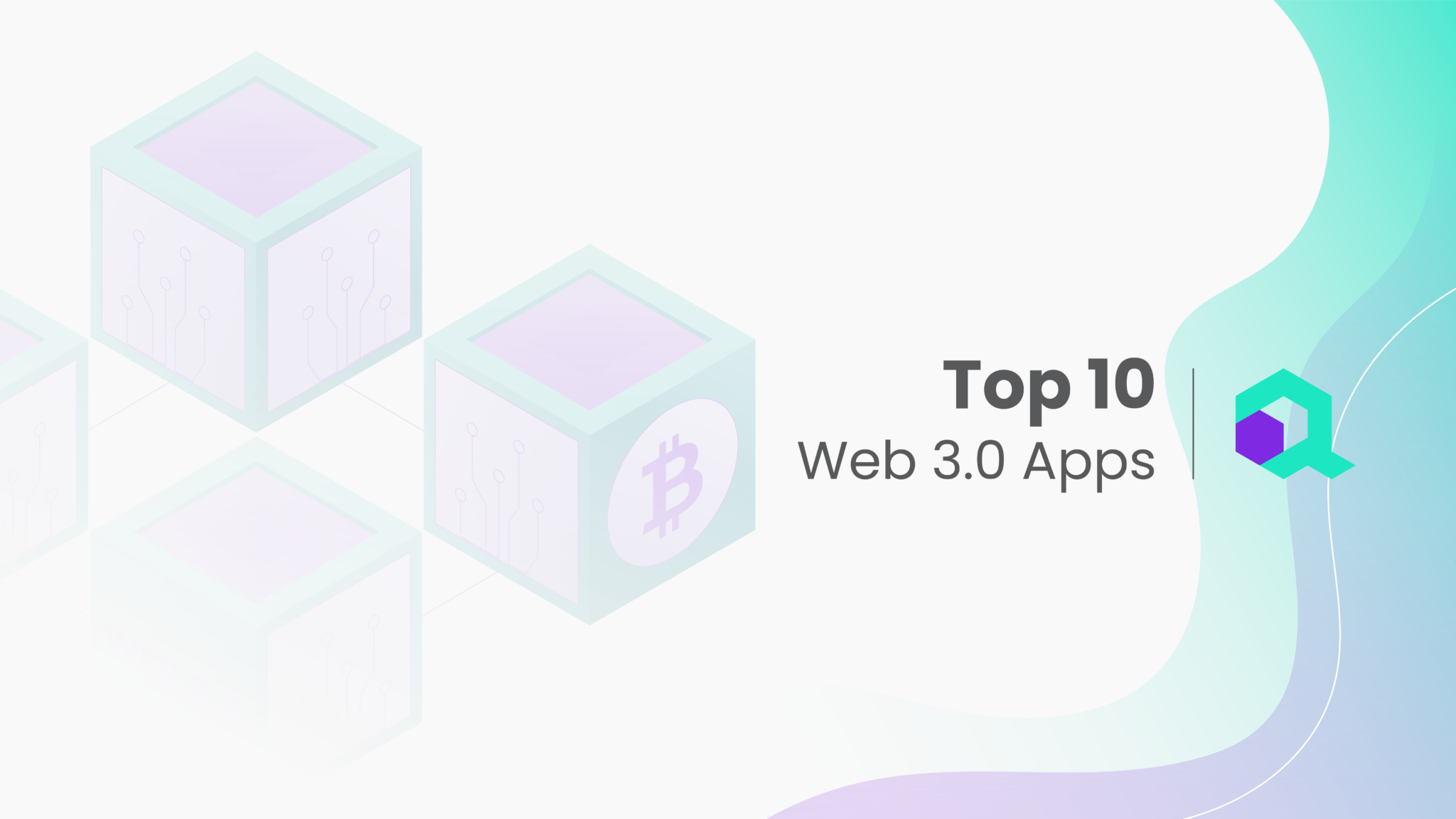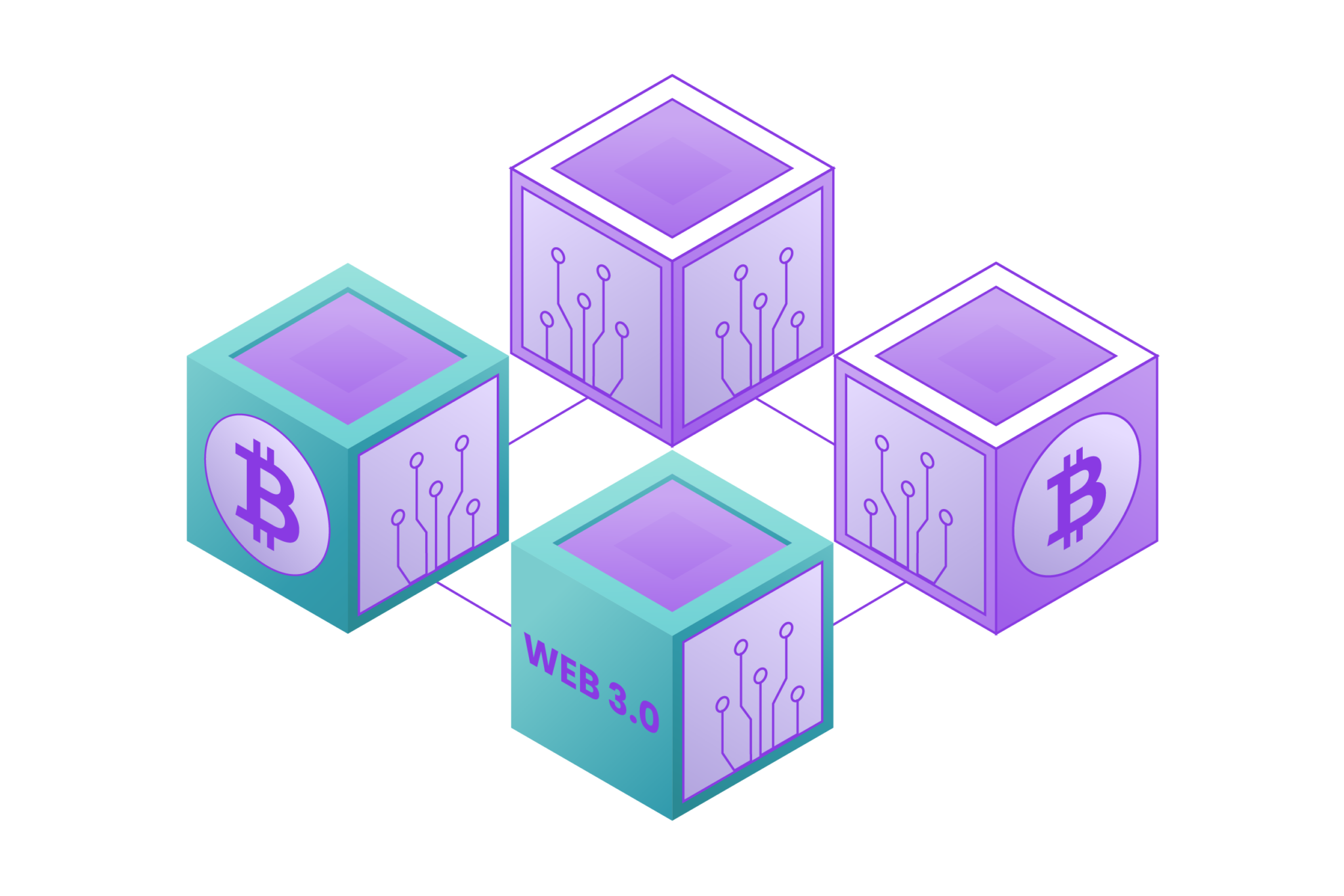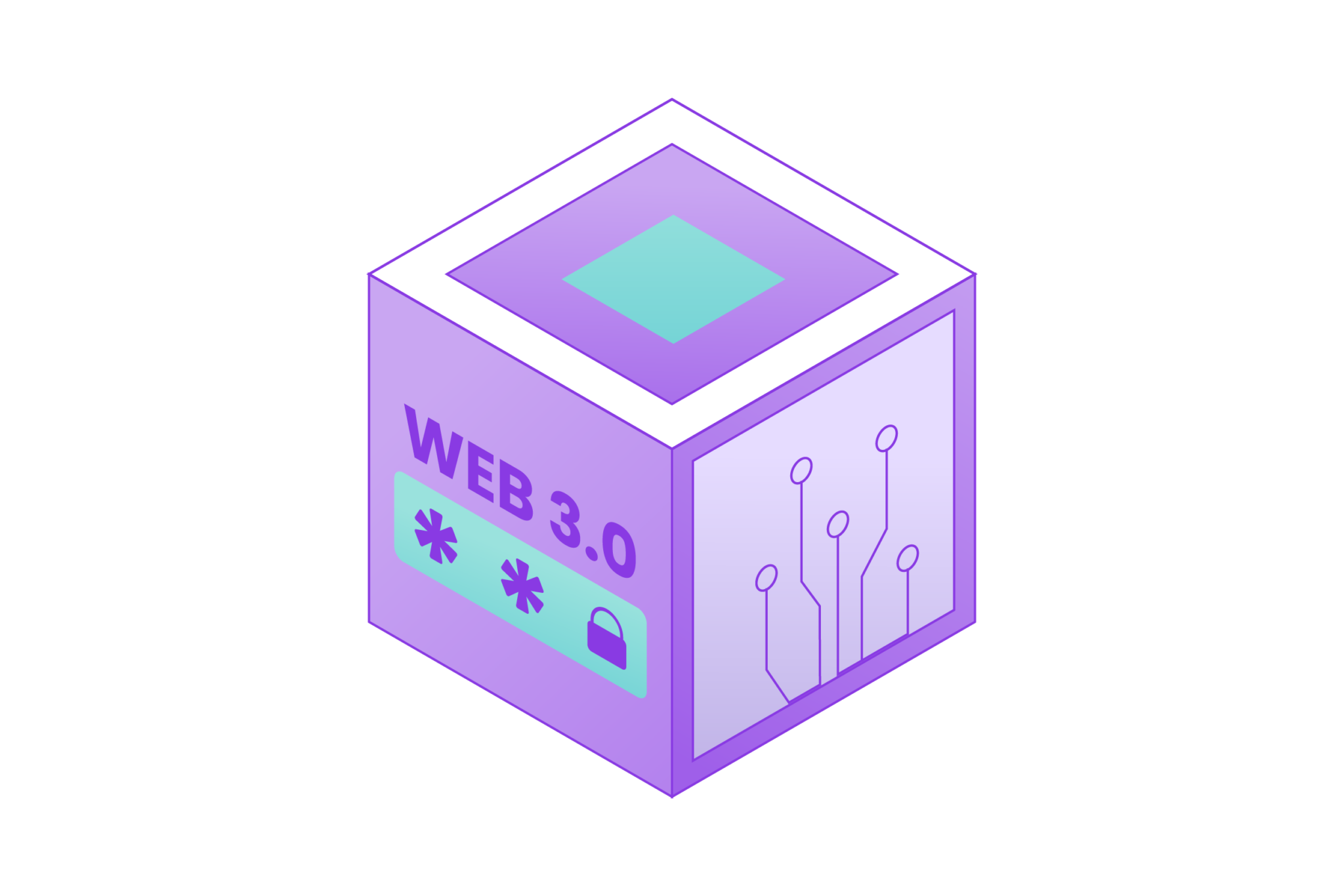
The digital landscape is evolving rapidly, with Web3 leading the charge towards a more interconnected and intelligent internet. This new phase in web development is characterized by the seamless integration of AI, blockchain technology, and decentralized data architecture, promising a future where users have unprecedented control over their online experiences. As we venture into 2025, it’s crucial to stay updated with the latest applications that embody the essence of Web3. This article dives into the top 10 Web3 apps that are setting the stage for a revolution in how we interact with the web, ensuring that you’re not left behind in this digital transformation.
The concept of Web3 might seem complex, but at its heart, it’s about creating more intelligent, connected, and open websites and applications. Unlike its predecessors, Web3 emphasizes user privacy, data ownership, and interoperability across platforms. This shift towards a more user-centric internet paves the way for innovations that were once deemed futuristic. From decentralized social networks to smart contracts that execute themselves, the possibilities are endless.
As we explore these groundbreaking apps, it’s essential to understand the impact they have on both our personal and professional lives. Web3 apps are not just about leveraging technology for the sake of novelty; they aim to solve real-world problems, enhance security, and promote a more equitable internet. So, without further ado, let’s dive into the top 10 Web3 apps of 2025, shedding light on how they’re reshaping our digital world.
The Importance of Decentralization in Web3

Decentralization in Web 3.0 heralds a significant shift from the traditional, centralized architecture of the internet, where a few large entities control data and access. By distributing the control and ownership of data across a network of computers, decentralization promises to democratize the internet, empowering users and fostering innovation. This approach not only challenges the status quo but also aims to address some of the internet’s most pressing issues, such as privacy violations, data monopolies, and the risk of censorship.
Empowering Users with Greater Control
Decentralization places control directly in the hands of the users, a stark contrast to the current model where users often have little say over how their data is used. In a decentralized web, users can own and control their data, choosing whom to share it with and under what terms. This empowerment is facilitated by technologies such as blockchain, which provides a transparent and secure way for users to manage their digital identities without relying on central authorities. The user-centric model of Web 3.0 envisions a more equitable digital landscape, where individuals have sovereignty over their personal information.
Fostering Transparency and Trust
Decentralization inherently promotes transparency and trust. In a decentralized network, transactions and data exchanges are recorded on a public ledger, accessible to anyone. This transparency ensures that operations within the network are conducted openly, making it easier to detect and deter fraudulent activities. Trust is established not through central authorities but through cryptographic verification and the immutable nature of blockchain records. This level of transparency and trust is particularly beneficial in industries like finance and supply chain management, where the provenance and authenticity of transactions are critical.
Also Read: What Is Chainlink? Definition and How It Works
Opportunities Ahead
The movement towards decentralization opens up a myriad of opportunities. It promises to create a more inclusive digital economy, where value and governance are distributed among users rather than concentrated in the hands of a few corporations. Innovative business models, enabled by smart contracts and decentralized finance (DeFi), are emerging, challenging traditional industries. As the technology matures and these challenges are addressed, the potential for decentralization to reshape the internet and society at large is immense.
While decentralization in Web 3.0 presents certain challenges, its potential to enhance security, empower users, and foster transparency and trust offers a compelling vision for the future of the internet. As we navigate these changes, the opportunities for innovation and transformation in how we interact with digital technologies are unparalleled.
Top 10 Web3 Apps to Consider in 2025

As the digital landscape continues to evolve, Web3 applications are at the forefront of innovation, leveraging blockchain technology, decentralized networks, and enhanced user experiences. In 2025, these groundbreaking applications are reshaping industries and redefining the way we interact with the internet. Here are the top 10 Web3 apps you need to check out this year:
1. Brave
Brave stands out in the Web3 landscape as a privacy-centric browser that significantly diverges from traditional web browsers like Google Chrome and Mozilla Firefox. It uses blockchain technology to block intrusive advertisements and trackers, thereby preserving user privacy.
Brave rewards users with its native cryptocurrency, Brave Tokens (BAT), for engaging with web content, offering a unique monetization model that benefits both users and content creators. This approach not only enhances privacy but also encourages a more equitable online ecosystem where users have control over their data and monetization options.
2. OpenSea
OpenSea has positioned itself as the largest and most versatile marketplace for non-fungible tokens (NFTs), offering a wide range of digital collectibles from art to domain names. This decentralized platform facilitates the creation, buying, selling, and trading of NFTs, leveraging blockchain technology to ensure transparency and security.
OpenSea’s smart contract functionality enables users to maintain custody of their NFTs, thereby safeguarding creators’ rights and offering a robust ecosystem for digital asset exchange.
3. Axie Infinity
Axie Infinity represents the forefront of blockchain gaming, utilizing a play-to-earn model that allows players to earn cryptocurrency and trade in-game assets as NFTs. This model has revolutionized the gaming industry by enabling players to gain real economic benefits from their in-game activities, such as breeding, battling, and trading digital pets known as Axies.
Axie Infinity’s success has highlighted the potential of integrating blockchain technology with gaming, offering players ownership and financial incentives that extend beyond traditional gaming experiences.
4. Spheron Network
Spheron Network is redefining cloud infrastructure by offering decentralized cloud storage and computing solutions. This platform aims to democratize access to cloud services, making it more secure, affordable, and accessible by leveraging blockchain technology.
Spheron’s unique proposition lies in its ability to provide audited data centers with a decentralized governance model, ensuring users benefit from reduced costs and enhanced security compared to conventional cloud services. The platform’s emphasis on ease of use and deployment further positions it as a leading contender in the decentralized infrastructure space.
5. Sapien
Sapien is an innovative social news platform built on the Ethereum blockchain, aiming to reshape online social interactions. Unlike traditional social media platforms, Sapien prioritizes user customization, ad-free experiences, and fee elimination, focusing on creating a user-centric ecosystem.
The platform supports diverse interactions, including communication, information exchange, and community building, all while leveraging blockchain to ensure transparency and user control. Sapien represents a significant shift towards more democratic and user-controlled online social spaces.
6. Everledger
In the realm of digital transparency, Everledger is pioneering with its blockchain-based solutions for tracking the lifecycle of high-value items like diamonds and artworks. The platform’s battery passport pilot, in partnership with Ford Motor Company, showcases its commitment to sustainability and ethical supply chains by providing a digital identity for each battery.
This initiative enables comprehensive tracking of materials, components, and lifecycle management, thereby promoting responsible recycling and usage of EV batteries. Everledger’s use of blockchain technology ensures unparalleled transparency and traceability in the supply chain.
7. Uniswap
As a decentralized finance (DeFi) platform, Uniswap has revolutionized cryptocurrency trading by allowing for automatic transactions between crypto tokens on the Ethereum blockchain without a central exchange.
Its innovative automated liquidity protocol facilitates efficient trading, liquidity provision, and decentralized pricing mechanisms. Uniswap exemplifies the power of DeFi by enabling open financial transactions, reducing entry barriers, and offering users control over their financial transactions without intermediaries.
8. Dmail
Dmail introduces a novel approach to email communication by leveraging blockchain technology for enhanced security and privacy. This decentralized mail system aims to provide a secure, private, and censorship-resistant platform for electronic communications, free from the control of centralized servers.
Dmail’s promise of utilizing cryptographic protocols for message security and distributed network storage positions it as a futuristic solution for privacy-conscious individuals and organizations seeking alternatives to traditional email services.
9. Secretum
Secretum is a groundbreaking decentralized messaging and over-the-counter (OTC) trading platform based on the Solana blockchain. It offers secure, private messaging without requiring personal contact details, alongside the ability to trade cryptocurrencies and NFTs directly within the app.
This blend of communication and trading functionalities addresses the growing demand for secure and efficient digital asset transactions, making Secretum a vital tool in the evolving Web 3.0 ecosystem.
10. Torum
Targeted at the cryptocurrency community, Torum is a social media platform that integrates social networking with an ecosystem designed around the unique needs of crypto enthusiasts. It offers a comprehensive suite for various services tailored to cryptocurrency users, including a unique ecosystem for networking, learning, and engaging with the crypto world.
Torum aims to bridge the gap between cryptocurrency enthusiasts and the broader public by providing a platform that not only facilitates interaction but also education and growth within the blockchain space. This focus on community and ecosystem development makes Torum a significant player in promoting blockchain adoption and understanding.
Each of these Web 3.0 applications showcases the potential and diversity of decentralized technologies across various sectors. From enhancing online privacy and security to creating new economic models in the digital and real world, these platforms embody the principles of Web 3.0. They offer more control, transparency, and ownership to users, paving the way for a more inclusive and user-centric digital future.
Ensuring Privacy and Security in Web3

The evolution to Web 3.0 represents a significant shift in how the internet operates, emphasizing decentralized networks, user sovereignty, and enhanced personal data control. This paradigm shift brings with it new challenges and opportunities in the realms of privacy and security. In this context, we delve into the mechanisms that Web 3.0 applications leverage to protect user information and provide a safer digital landscape.
- Blockchain Technology: At the heart of Web 3.0’s approach to privacy and security lies blockchain technology. Renowned for its decentralization, blockchain eliminates single points of failure, making data breaches more difficult. By distributing data across a network of computers, it ensures that even if one part of the network is compromised, the overall integrity and availability of data remain intact. Furthermore, blockchain’s inherent transparency allows for transactions and data exchanges to be openly verified, fostering trust among users while preserving anonymity.
- Advanced Encryption Methods: Encryption plays a crucial role in safeguarding data within Web 3.0 ecosystems. Techniques such as public-key cryptography enable secure communication between parties, ensuring that only the intended recipient can decrypt and access the information sent. This method is fundamental for protecting sensitive data against interception and unauthorized access as it traverses the decentralized web.
- Smart Contracts: Smart contracts are self-executing contracts with the terms of the agreement directly written into lines of code. These contracts run on blockchain platforms and are immutable once deployed, providing a secure and transparent way to facilitate and enforce transactions without the need for intermediaries. This automation not only streamlines processes but also significantly reduces the risk of fraud, corruption, and human error.
- Zero-Knowledge Proofs: A revolutionary concept in the domain of digital privacy, zero-knowledge proofs enable one party to prove to another that a statement is true, without revealing any information beyond the validity of the statement itself. This method is particularly potent in identity verification processes, allowing users to prove their identity or credentials without disclosing sensitive personal information.
- Decentralized Identifiers (DIDs): DIDs are a foundational element of Web 3.0, providing a way for individuals to create and control their digital identities without reliance on central authorities. By enabling users to manage their own identities, DIDs empower individuals with greater control over how, when, and with whom their personal data is shared, significantly enhancing privacy and security.
- Secure Data Storage Solutions: Web 3.0 introduces novel data storage solutions, such as decentralized file systems, that distribute user data across multiple locations to mitigate the risks of data loss, tampering, and unauthorized access. These systems often incorporate additional security measures, including encryption and access control mechanisms, to further enhance data privacy and security.
The transition to Web 3.0 brings forth innovative technologies and methodologies designed to address the growing concerns over digital privacy and security. By leveraging blockchain technology, advanced encryption, smart contracts, zero-knowledge proofs, decentralized identifiers, and secure data storage solutions, Web 3.0 applications are paving the way for a more secure and privacy-respecting digital era.
Navigating the Challenges of Web 3.0 Adoption
The transition to Web 3.0, often heralded as the next evolutionary phase of the internet, introduces a host of transformative possibilities, from decentralized applications (dApps) and finance (DeFi) to enhanced personal data sovereignty and more immersive digital experiences. However, the journey toward widespread Web 3.0 adoption is fraught with significant obstacles that need careful navigation.
Technological Limitations
One of the primary challenges lies in the technological infrastructure required for Web 3.0. The promise of a decentralized web hinges on blockchain technology, which, despite its advancements, still faces issues such as scalability, energy consumption, and transaction speed. For instance, popular blockchain networks can handle only a fraction of the transactions per second compared to traditional payment networks, leading to bottlenecks during high demand periods.
Moreover, the user experience (UX) in Web 3.0 applications often falls short of the seamless interactions users have come to expect from Web 2.0 platforms. The complexity of managing digital wallets, understanding private keys, and navigating through decentralized applications can deter non-technical users. Enhancing the UX and simplifying interactions without compromising security are crucial steps toward making Web 3.0 accessible to a broader audience.
Regulatory Uncertainties
The decentralized nature of Web 3.0 also poses significant regulatory challenges. Governments and regulatory bodies worldwide are grappling with how to oversee decentralized networks and digital assets without stifling innovation. Issues such as digital asset classification, taxation, and compliance with anti-money laundering (AML) standards remain unresolved. This regulatory ambiguity can hinder investment and development in the Web 3.0 ecosystem, as stakeholders may be wary of potential legal repercussions.
To navigate these uncertainties, there is a need for a balanced regulatory approach that ensures user protection and market integrity while fostering innovation. Engaging in dialogue with policymakers, industry stakeholders, and regulatory bodies is essential to develop a coherent regulatory framework that accommodates the unique aspects of decentralized technologies.
Also Read: The Most Anticipated Airdrop of March 2025
The Digital Divide
Another significant hurdle is the digital divide—the gap between those who have access to modern information and communication technology and those who do not. Web 3.0’s reliance on advanced technologies risks exacerbating this divide, as individuals without access to the necessary hardware, reliable internet connections, or digital literacy skills may find themselves further marginalized.
Addressing the digital divide requires concerted efforts from governments, non-profit organizations, and the private sector to improve infrastructure, affordability, and digital education. Initiatives aimed at increasing internet accessibility, promoting digital literacy, and providing affordable devices are critical to ensuring that Web 3.0 benefits are widely accessible.
Moving Forward
Overcoming these challenges necessitates a multi-faceted approach involving technological innovation, regulatory clarity, and inclusive policies. By focusing on improving blockchain scalability, enhancing user experience, fostering regulatory dialogue, and bridging the digital divide, stakeholders can pave the way for a more inclusive and equitable digital future that Web3 promises to bring.
In essence, while the path to Web3 adoption is complex, a collaborative and user-centric approach can unlock its full potential, creating an internet that is more democratic, transparent, and empowering for users worldwide.
Conclusion
As we look towards the future, it’s clear that Web3 apps are at the forefront of a digital revolution. The top 10 Web3 apps of 2025 highlighted in this article are just the beginning of a transformative journey towards a more decentralized, intelligent, and user-centric internet. By embracing these innovations, we can unlock new opportunities, enhance our online experiences, and participate in a digital landscape that prioritizes privacy, security, and user empowerment.
The journey to fully realizing the potential of Web3 is ongoing, and it’s an exciting time to be part of this evolution. As developers continue to push the boundaries of what’s possible, and users become more engaged with these new technologies, we can expect to see even more groundbreaking applications emerge. The key to navigating this shift lies in understanding the principles behind Web3, staying informed about the latest developments, and being open to exploring new digital realms.
In conclusion, the rise of Web3 apps marks a pivotal moment in the history of the internet. As we continue to explore and adopt these technologies, we’re not just witnessing the evolution of the web; we’re participating in it. The future of the internet is bright, and Web3 apps are lighting the way. By staying curious, informed, and engaged, we can all play a part in shaping a digital future that’s more inclusive, intelligent, and interconnected than ever before.
Disclaimer: The information provided by Quant Matter in this article is intended for general informational purposes and does not reflect the company’s opinion. It is not intended as investment advice or a recommendation. Readers are strongly advised to conduct their own thorough research and consult with a qualified financial advisor before making any financial decisions.

Joshua Soriano
As an author, I bring clarity to the complex intersections of technology and finance. My focus is on unraveling the complexities of using data science and machine learning in the cryptocurrency market, aiming to make the principles of quantitative trading understandable for everyone. Through my writing, I invite readers to explore how cutting-edge technology can be applied to make informed decisions in the fast-paced world of crypto trading, simplifying advanced concepts into engaging and accessible narratives.
- Joshua Soriano#molongui-disabled-link
- Joshua Soriano#molongui-disabled-link
- Joshua Soriano#molongui-disabled-link
- Joshua Soriano#molongui-disabled-link
